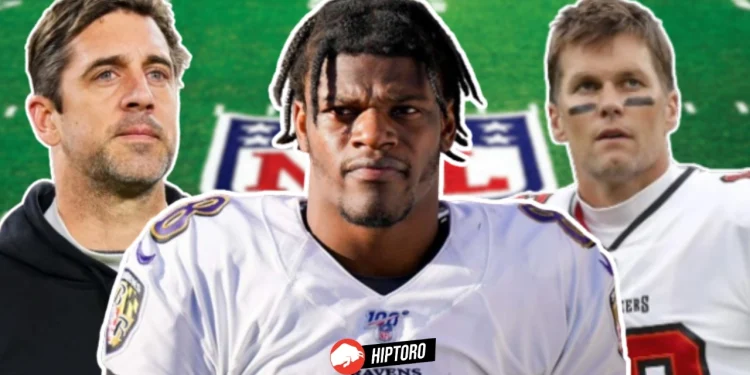The NFL Draft is not just an annual event but a pivotal moment that can define the fate of franchises for years. It’s a spectacle where dreams are made or broken, and where teams meticulously plan their strategies in hopes of finding the missing pieces that will lead them to the Super Bowl. While the draft order is often anticipated based on team needs, scouting reports, and collegiate performances, there are always those unexpected moments that leave fans and analysts bewildered.
Whether it’s an under-the-radar pick that blossoms into greatness, or a first-round gamble that never quite pays off, these surprises highlight the unpredictability of evaluating and projecting athletic talent. They reveal the high-stakes nature of the NFL Draft, where a single selection can make or break a team’s future. This exploration of the top ten most surprising draft picks in NFL history sheds light on the stories, decisions, and legacies that define some of the NFL’s most talked-about moments.

In the rich history of the NFL Draft, a select few picks have sent shockwaves across the league, generating excitement, disbelief, or confusion among fans and analysts alike. Each NFL team carefully strategizes its draft selections, attempting to build a roster capable of winning the coveted Super Bowl. But every now and then, a pick is made that leaves everyone talking for days, if not years. Here’s a deep dive into the ten most surprising draft picks in NFL history, each notable for its unexpected nature and the repercussions it had on teams and careers.
Here are the Top 10 Most Surprising Draft Picks in NFL History
1. Tom Brady (2000, Round 6, Pick 199)
Tom Brady’s selection by the New England Patriots in the 6th round of the 2000 NFL Draft remains the most surprising and consequential pick in NFL history. Coming out of the University of Michigan, Brady wasn’t a highly touted prospect. He didn’t possess extraordinary athleticism, often described as having a lackluster 40-yard dash time and unimpressive vertical jump. His college career was relatively solid but didn’t scream “future Hall of Famer.” Scouts deemed him too slow, with an awkward throwing motion and less-than-ideal physique.
Brady’s late-round selection by the Patriots suggested that he might be a career backup. Initially, he began his rookie season as the team’s fourth-string quarterback, barely seeing the field. However, fate intervened during the 2001 season when starting quarterback Drew Bledsoe suffered a severe injury, thrusting Brady into the spotlight. What followed was a Cinderella story: Brady led the Patriots to a stunning Super Bowl victory that season, beginning a dynasty that would dominate the NFL for two decades.
Over the years, Brady shattered records, winning seven Super Bowls and multiple MVP awards. His methodical preparation, football IQ, and laser-focused competitiveness changed the quarterback position’s narrative. He was known for his ability to dissect defenses with precision and perform under pressure. By turning into a perennial Pro Bowl player, Brady revolutionized the quarterback position and proved that athletic measurements often pale in comparison to intangibles like leadership, work ethic, and a strategic mindset.
The Brady story also impacted how the league approaches quarterback evaluation. While athleticism remains a significant factor, teams have placed a greater emphasis on mental acuity and decision-making. Scouts now search for overlooked gems, hoping to uncover the next “Tom Brady.”
2. Aaron Rodgers (2005, Round 1, Pick 24)
Aaron Rodgers’ slide to the 24th overall pick in the 2005 NFL Draft remains one of the more confounding episodes in recent NFL history. Regarded as one of the top quarterbacks in the draft class, Rodgers was expected to be selected near the top, possibly even by the San Francisco 49ers with the first overall pick. Instead, the 49ers chose Alex Smith, sending Rodgers into an uncomfortable and unexpectedly prolonged wait.
/cdn.vox-cdn.com/uploads/chorus_image/image/64114901/52687926.jpg.0.jpg)
As pick after pick went by without his name being called, Rodgers finally found his home with the Green Bay Packers at pick 24. The selection raised eyebrows because the Packers already had an iconic quarterback, Brett Favre, leading the team. With Favre entrenched as a starter, Rodgers was slated to spend an indeterminate period as a backup, something highly unusual for a first-round pick.
After three seasons learning behind Favre, Rodgers finally took over as the starting quarterback in 2008. From there, he quickly displayed his immense talent, leading the Packers to a Super Bowl victory in the 2010 season. Rodgers’ pinpoint accuracy, uncanny decision-making, and ability to extend plays with his mobility made him one of the league’s premier quarterbacks.
Rodgers’ selection, surprising at the time, proved to be a shrewd move for the Packers, who ensured a seamless transition from Favre’s era to another potential Hall of Famer. His career has been marked by multiple MVP awards, numerous playoff appearances, and countless memorable performances. Rodgers’ story is a testament to the importance of preparation and patience, as well as how a player can flourish in the right environment.
3. Lamar Jackson (2018, Round 1, Pick 32)
Lamar Jackson’s arrival in the NFL was met with skepticism from many experts who doubted his ability to translate his electric college game to the pro level. Despite winning the Heisman Trophy at the University of Louisville and dazzling fans with his athleticism, questions lingered about his passing skills and how his style would fit in the NFL. Some even suggested he switch positions, believing that his potential lay in playing wide receiver rather than quarterback.

The Baltimore Ravens had other ideas. With the final pick of the first round in 2018, they selected Jackson and set out to build their offense around his unique talents. Initially, he started as Joe Flacco’s backup but eventually took over as the starter mid-season when Flacco was injured. Jackson’s impact was immediate: his speed and agility kept defenders on their heels, and his passing game steadily improved.
The following season, Jackson exploded, winning the league MVP in 2019 and leading the Ravens to a 14-2 record. His success forced defenses to rethink how to contain dual-threat quarterbacks, as he could beat teams with his arm and his legs. Jackson redefined what was expected from a quarterback in the modern NFL, proving that unconventional playing styles can flourish with the right system.
His selection by the Ravens reshaped the team’s offensive philosophy. By emphasizing the run-pass option (RPO) and maximizing Jackson’s rushing abilities, the Ravens showed that building an offense around a mobile quarterback could be highly successful. Jackson’s draft pick is now seen as a game-changing decision that ushered in a new era for mobile quarterbacks.
4. Russell Wilson (2012, Round 3, Pick 75)
When Russell Wilson was drafted by the Seattle Seahawks in the third round of the 2012 NFL Draft, many assumed he’d be a career backup at best. At 5’11”, Wilson was considered too short to succeed as a quarterback in the NFL, a league that traditionally favored taller quarterbacks. Despite his remarkable college career and impressive performance at the NFL Scouting Combine, doubts persisted about his ability to see over offensive linemen and deliver consistent throws.

Seahawks head coach Pete Carroll and general manager John Schneider saw potential in Wilson, despite the concerns. They took a gamble on the quarterback in the third round, believing that his leadership, mobility, and decision-making could elevate their team. Although the Seahawks had recently signed free-agent quarterback Matt Flynn, Wilson quickly won the starting job in training camp.
His rookie season in 2012 was impressive, as Wilson led the Seahawks to the playoffs and was named to the Pro Bowl. The following year, Wilson guided the team to its first Super Bowl victory. Over the next several years, he became known for his ability to extend plays, his accuracy, and his clutch performances in the fourth quarter.
Wilson’s meteoric rise proved that intangibles like leadership, football intelligence, and mental toughness could outweigh physical attributes like height. He changed the perception of what a successful NFL quarterback could look like, showing that shorter players could excel. Wilson’s selection was a turning point for the Seahawks, setting the foundation for one of the league’s most dominant franchises in the 2010s.
5. Mitchell Trubisky (2017, Round 1, Pick 2)
The Chicago Bears’ decision to trade up in the 2017 NFL Draft and select Mitchell Trubisky with the second overall pick was met with widespread shock and criticism. The surprise stemmed from the fact that Trubisky, despite showing promise at the University of North Carolina, had only 13 starts in college and was relatively inexperienced compared to other quarterbacks in the draft. Many experts considered Patrick Mahomes and Deshaun Watson to be better prospects, but the Bears decided that Trubisky was their quarterback of the future.
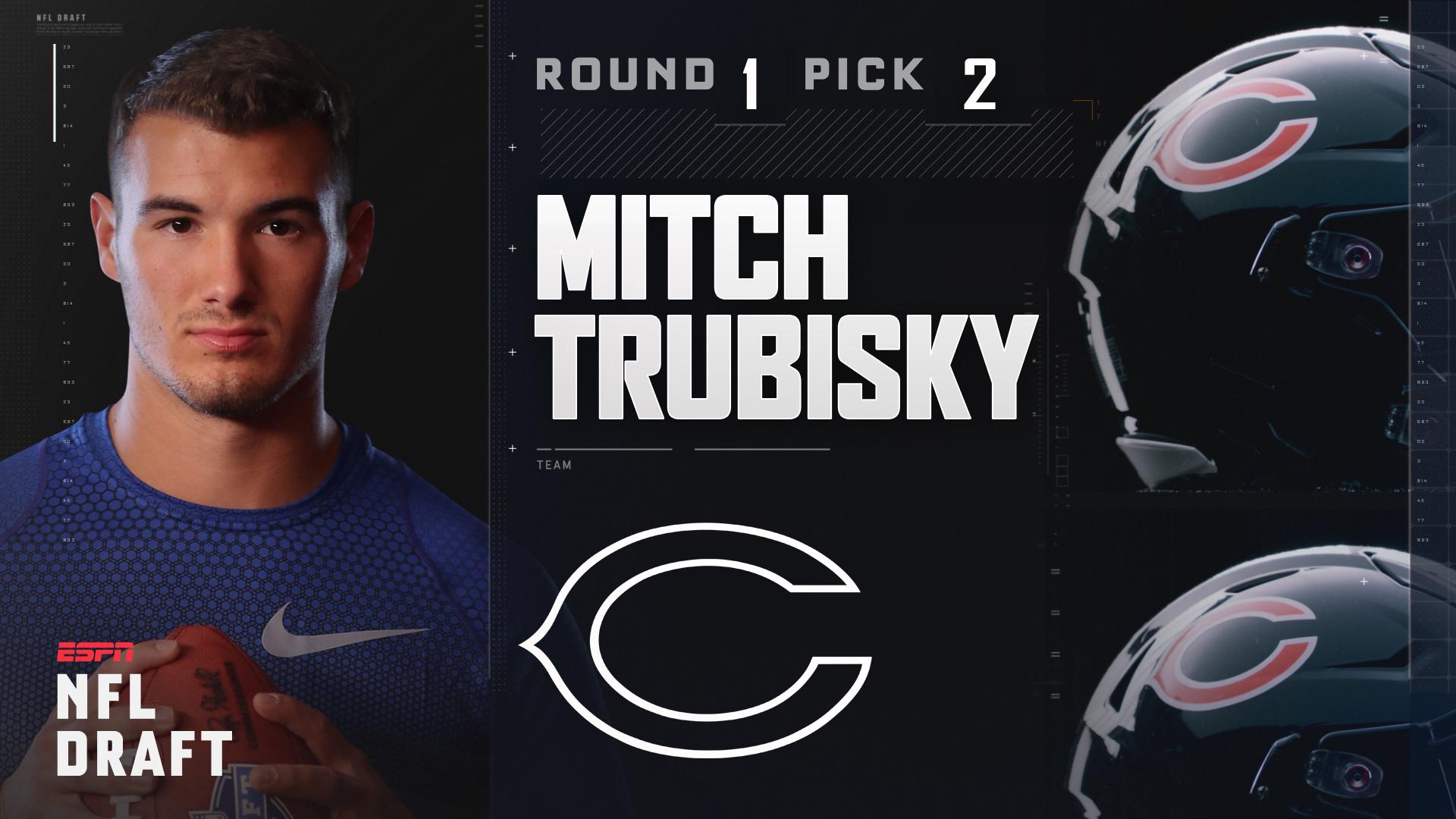
Trubisky’s early career was characterized by inconsistency and moments of brilliance that hinted at untapped potential. He struggled to adjust to the speed of the NFL game, particularly under pressure. Despite a solid 2018 season where he helped lead the Bears to the playoffs, questions persisted about his ability to become a franchise quarterback.
Over time, the criticism of the Trubisky pick only intensified as Mahomes and Watson emerged as two of the league’s brightest young stars. Mahomes led the Kansas City Chiefs to multiple AFC Championship games and a Super Bowl victory, while Watson became the focal point of the Houston Texans’ offense. Meanwhile, Trubisky’s performance regressed, and he was eventually benched in favor of veteran Nick Foles in 2020 before leaving the Bears for a backup role with the Buffalo Bills.
The selection of Trubisky is now viewed as one of the biggest draft mistakes in recent history, with the Bears passing on two superior quarterbacks to pick a player who ultimately didn’t live up to expectations. This episode serves as a lesson in the unpredictability of the NFL Draft, where no pick is guaranteed to succeed.
6. J.J. Watt (2011, Round 1, Pick 11)
J.J. Watt’s journey from a relatively unheralded prospect to one of the most dominant defensive players in NFL history is a remarkable story. The Houston Texans took Watt with the 11th overall pick in the 2011 NFL Draft. Although he was widely regarded as a good prospect out of the University of Wisconsin, he wasn’t expected to be a transcendent player, given the loaded talent pool that year.
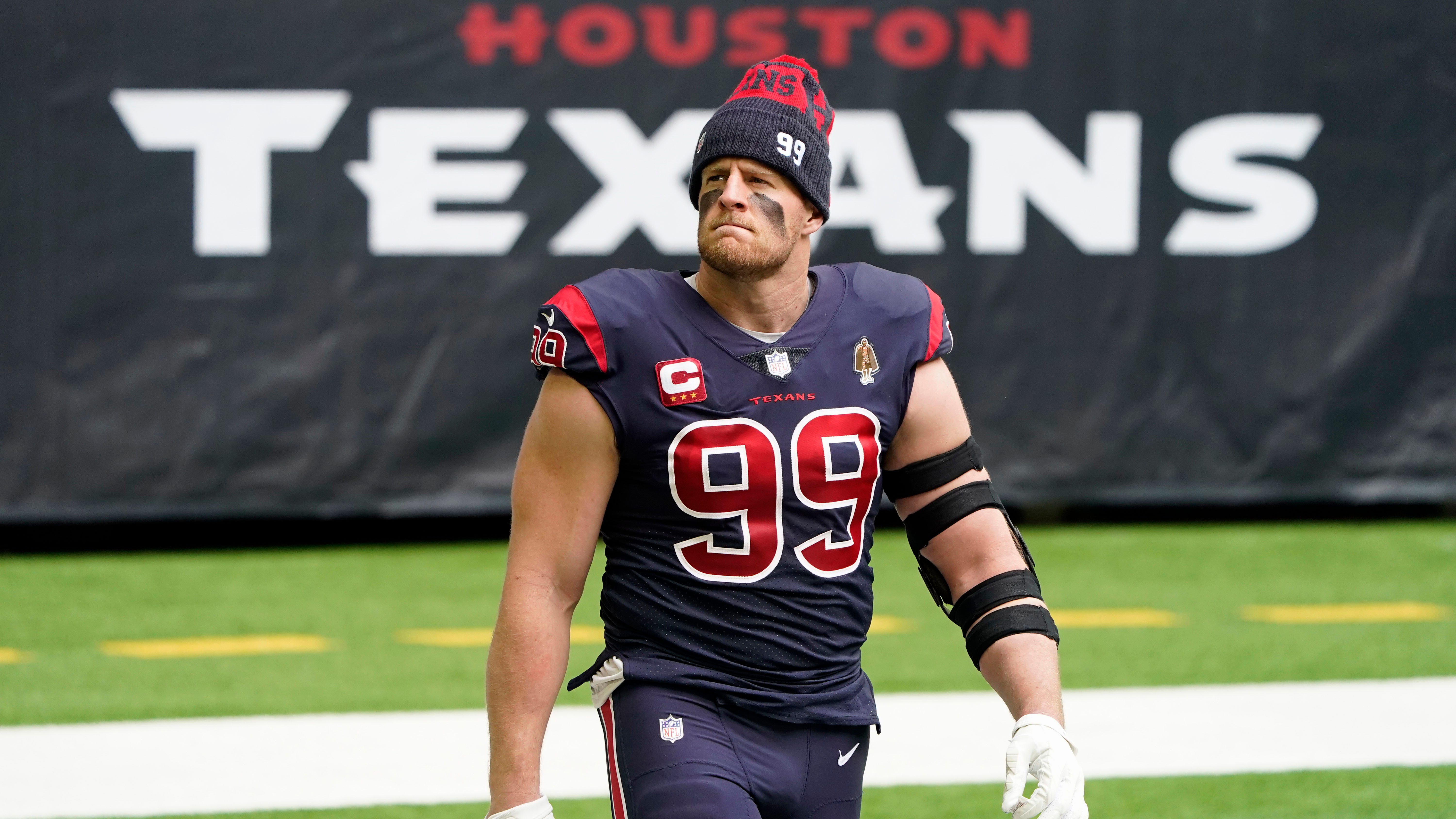
Watt entered the NFL with a reputation as a relentless worker and high-character individual. From day one, he made an impact, quickly becoming a starter and leading the Texans’ defense with his blend of power, speed, and instinct. He was named the NFL Defensive Player of the Year three times in a four-year span (2012, 2014, and 2015), dominating offensive linemen and disrupting opposing offenses almost single-handedly.
Known for his ability to rush the passer and stuff the run, Watt also displayed an uncanny knack for blocking passes at the line of scrimmage, earning the nickname “J.J. Swatt.” Off the field, he endeared himself to fans with his charitable work, particularly after Hurricane Harvey devastated the Houston area in 2017.
Despite his excellence, Watt’s career has been marred by injuries, preventing him from maintaining consistent availability in recent years. Nevertheless, his impact on the Texans’ franchise is immeasurable. His selection at the 11th pick, initially questioned by some, proved to be a franchise-altering decision that solidified the Texans’ defense for nearly a decade.
7. Johnny Manziel (2014, Round 1, Pick 22)
Johnny Manziel, known as “Johnny Football,” was one of the most polarizing figures entering the 2014 NFL Draft. His dazzling college career at Texas A&M, including a Heisman Trophy win in 2012, made him a household name. However, his off-field antics and playing style, which relied heavily on improvisation, raised concerns about his ability to transition to the NFL.

The Cleveland Browns took a risk and selected Manziel with the 22nd pick in the first round, hoping he could be their franchise quarterback. His arrival was greeted with tremendous fanfare, and Manziel quickly became one of the league’s most publicized rookies. However, his play on the field was erratic and inconsistent. Manziel struggled to adapt to the speed of NFL defenses and failed to demonstrate the same magic he had in college.
Off the field, his issues worsened. Reports of substance abuse and partying overshadowed his brief playing career. After two seasons marred by poor performance and off-field distractions, the Browns cut ties with Manziel, who soon left the NFL altogether.
The pick remains one of the most surprising and disappointing in recent memory. Manziel’s fall from grace exemplified how difficult the transition can be for even the most talented college players and highlighted the importance of character evaluation in the draft process.
8. Ryan Leaf (1998, Round 1, Pick 2)
Ryan Leaf’s selection by the San Diego Chargers with the second overall pick in the 1998 NFL Draft stands as one of the most infamous picks in history. Heading into the draft, Leaf was neck-and-neck with Peyton Manning as the most coveted quarterback prospect. Many experts believed that Leaf had a higher ceiling than Manning due to his strong arm and swagger.
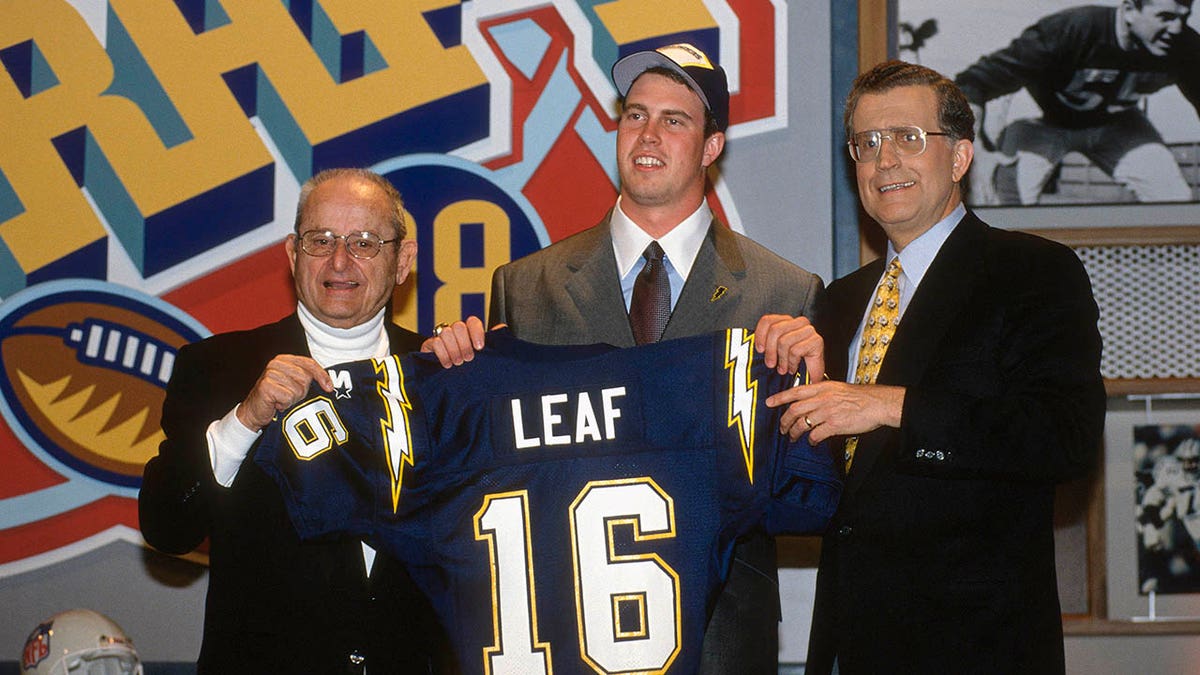
However, Leaf’s career quickly became a cautionary tale. After a promising start to his rookie season, he fell apart, clashing with teammates and coaches. His on-field performance declined rapidly, and he was soon benched. Leaf’s off-field issues, including a tumultuous relationship with the media and a perceived lack of commitment, further derailed his career.
He bounced around the league for a few more seasons before exiting the NFL with an ignominious reputation. His name has since become synonymous with draft busts, serving as a reminder that raw talent alone isn’t enough to succeed in the NFL.
The selection of Leaf over other more reliable prospects was a disaster for the Chargers, who spent years struggling to find stability at the quarterback position. His failure also highlighted the importance of character and maturity in player evaluation.
9. Bo Jackson (1986, Round 7, Pick 183)
Bo Jackson’s journey to the NFL was as unusual as his athletic gifts. Jackson was a star at Auburn University, excelling in both football and baseball. The Tampa Bay Buccaneers made him the first overall pick in the 1986 NFL Draft, but a disagreement between Jackson and the Buccaneers’ management led him to reject their offer and pursue a career in Major League Baseball instead.
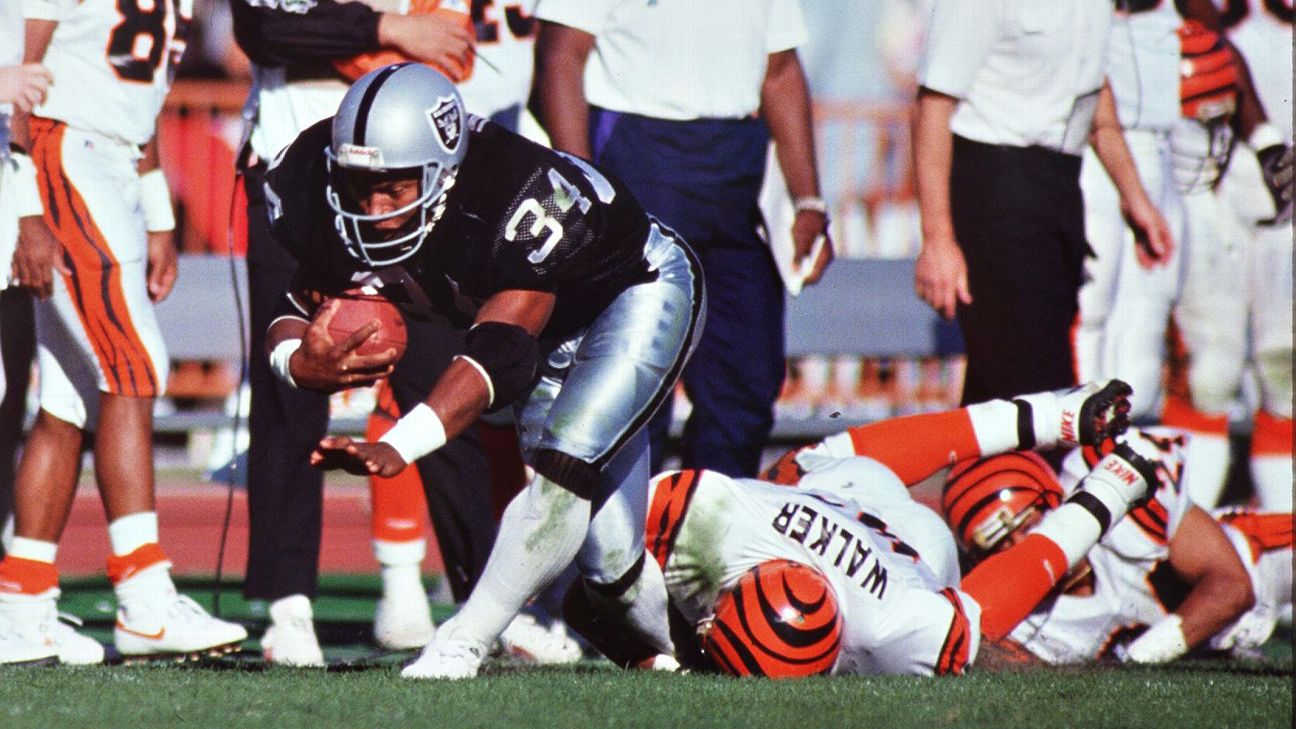
The following year, the Los Angeles Raiders took a gamble by drafting Jackson in the 7th round. They negotiated a part-time arrangement that allowed Jackson to continue playing baseball while joining the Raiders during the offseason. Despite playing football as a “hobby,” Jackson was a dynamic presence, using his rare combination of speed and power to make game-breaking plays. His legendary performances, like the 91-yard touchdown run against Seattle and running over Brian Bosworth, cemented his status as a two-sport icon.
Unfortunately, a devastating hip injury suffered during a playoff game effectively ended his NFL career after just four seasons. Though Jackson’s time in the league was short, his impact was immense, changing how people viewed multi-sport athletes.
10. Tim Tebow (2010, Round 1, Pick 25)
Tim Tebow’s selection by the Denver Broncos with the 25th overall pick in the 2010 NFL Draft remains a hotly debated choice. Tebow had an illustrious college career at the University of Florida, winning the Heisman Trophy and two national championships. Despite his achievements, many scouts viewed Tebow’s unconventional throwing motion and style as liabilities in the NFL.

The Broncos, led by head coach Josh McDaniels, believed that Tebow’s leadership and intangibles would translate to NFL success. However, Tebow’s career was marked by inconsistency. His unorthodox mechanics and inability to read defenses hindered his passing game, and he relied heavily on his rushing ability.
In 2011, Tebow led the Broncos to an unexpected playoff berth, culminating in a memorable overtime victory against the Pittsburgh Steelers. However, his shortcomings as a passer became increasingly evident, leading the Broncos to pursue Peyton Manning and trade Tebow away.
After brief stints with other teams, Tebow exited the NFL. Despite the fanfare and expectations that surrounded his selection, he never fully adapted to the pro game. The Tebow pick serves as an example of how intangibles can only take a player so far without the fundamental skills required for success at the NFL level.
Conclusion
In the unpredictable realm of the NFL Draft, each selection carries weight and the potential to reshape teams’ destinies. The top ten most surprising draft picks represent moments when conventional wisdom was defied, and franchises took calculated or impulsive risks that shaped their future, for better or worse.
The surprising success of players like Tom Brady, Aaron Rodgers, and Russell Wilson serves as a testament to perseverance, talent, and the significance of finding the right system. Meanwhile, the trials and tribulations of Mitchell Trubisky, Johnny Manziel, and Ryan Leaf emphasize the challenges of transitioning to the NFL and underscore the importance of mental fortitude and the support of a well-structured organization.
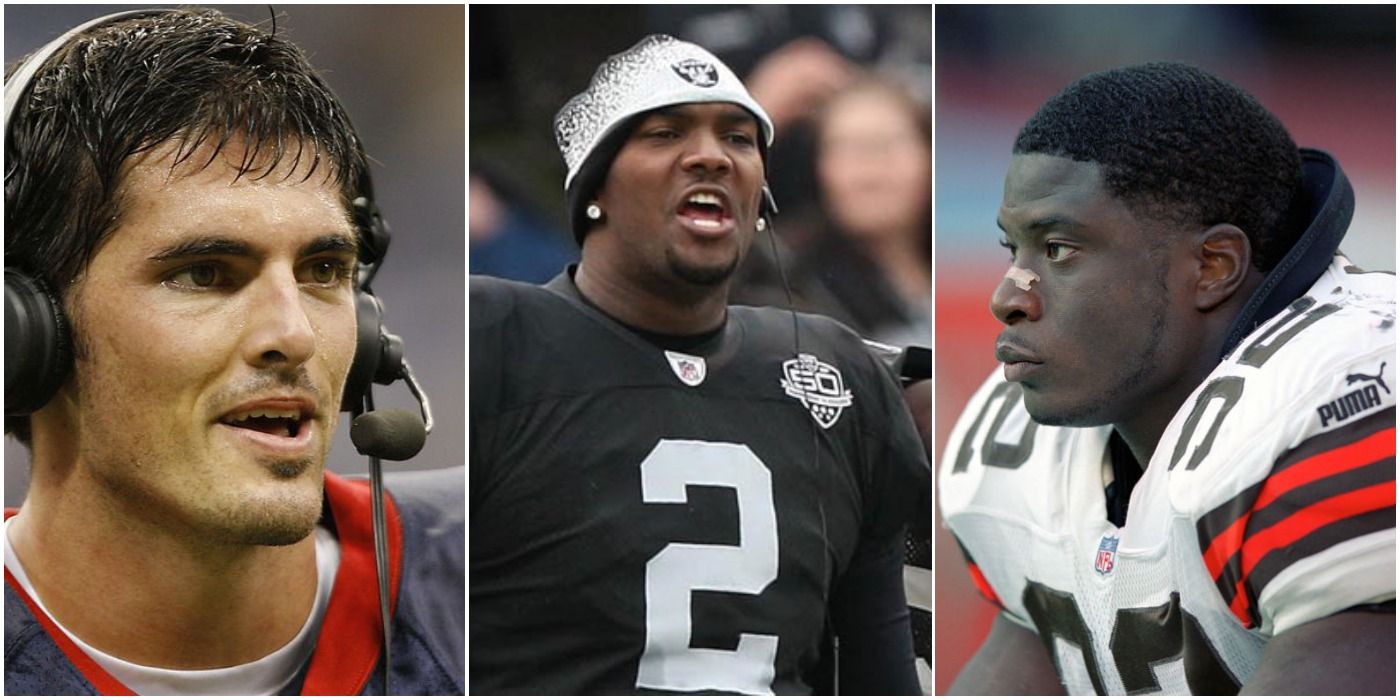 These selections remind us that while statistical analysis, scouting, and coaching insight are vital, the draft remains an inexact science. Intangibles like leadership, adaptability, and resilience can sometimes outweigh physical attributes or collegiate accomplishments.
These selections remind us that while statistical analysis, scouting, and coaching insight are vital, the draft remains an inexact science. Intangibles like leadership, adaptability, and resilience can sometimes outweigh physical attributes or collegiate accomplishments.
Each surprising pick contributes to the mythology of the NFL Draft and offers valuable lessons that shape how teams approach player evaluations and roster building. Ultimately, the unpredictable nature of the draft makes it one of the most captivating events in sports, where expectations can be shattered, and new legends can be born with a single selection.


